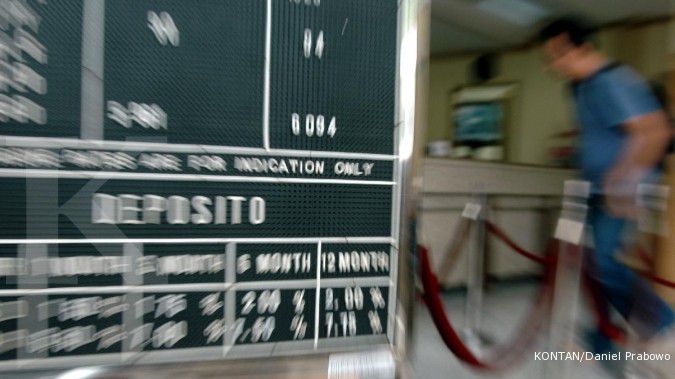JAKARTA. With credit growth lower this year, commercial banks are on tenterhooks with the latest increase in Bank Indonesia’s (BI) benchmark interest rate, despite the central bank’s claim that the increase will not significantly affect the banking industry.
Major lender Bank Rakyat Indonesia (BRI) has set its growth target at 18 to 20 percent, down from the previous 20 to 22 percent, according to BRI finance director Achmad Baiquni.
The latest BI rate increase has forced the bank to increase its prime lending rates for the first time this year, he said. “We did not adjust the rates when the central bank upped its rate twice in June and July, but it is becoming harder not to make adjustments,” he said on Friday.
BRI is now mulling a 50 basis points (bps) increase and will implement the change soon. With a revised target, BRI’s loan disbursements are expected to be between Rp 410.91 trillion (US$37.61 billion) and Rp 417.87 trillion.
Achmad acknowledged that the bank would also see an “adjustment” in its bottom line as it was prepared to jack up its deposit rates, resulting in a higher cost of funds. For the past seven years, BRI has maintained its dominance in profits by posting the biggest gain among all lenders.
Tension is also running high at OCBC NISP. Parwati Surjaudaja, the bank’s president director, said it was looking at 20 percent growth only in credit to reach Rp 63.6 trillion by year-end.
“We revised our target to between 20 and 30 percent in the middle of this year, but now we are looking at the lower level of the range,” she said, adding that the bank’s consumer segment would feel the pinch the most.
In 2012, OCBC NISP’s loan disbursements amounted to Rp 53 trillion, 28 percent higher than in 2011. Most of the loans were used for working capital, followed by investment and consumer goods purchases.
Separately, Bank Central Asia (BCA) president director Jahja Setiaatmadja said his bank would increase its credit rates by about 0.5 percent in early September. Presently, BCA’s prime lending rates stand at 9.25 percent for corporate loans, 10.6 percent for retail loans, 9.5 percent for mortgages and 8.18 percent for non-mortgage consumer loans.
All of the loan segments would likely slow down following the rate increase, Jahja said. BCA previously set an 18 to 20 percent growth target for 2013, equal to Rp 303 trillion to Rp 308.13 trillion.
Meanwhile, BI Governor Agus Martowardojo — who has increased the key interest rate a cumulative 125 bps to 7 percent since taking office in May — expressed optimism that the latest interest rate increase would not have a negative impact on the banking industry.
“We performed a stress test on banks and concluded that the Indonesian banking industry is different from those in other countries, notably in India,” he told reporters.
“Our banks have good capital adequacy levels, a low ratio of bad loans and healthy liquidity,” he added.
Indonesian banks have been posting a “too high” lending growth of above 20 percent over the past few years and the monetary tightening would adjust the economy to a healthier state, Agus said.
Indonesia boasts a banking industry that is among the world’s fastest-growing and most profitable. For instance, domestic banks with a market value of more than $5 billion have an average margin of 6.55 percent, the highest among the 20 largest economies, Bloomberg data shows.
BI spokesperson Difi Johansyah said Indonesian banks had enjoyed “fat profits” over the past few years and it was time for them to be prudent in their expansion.
Similar to Difi, Gadjah Mada University economist A. Tony Prasetiantono said banks would now be forced to reduce their net interest margins to keep expanding. He expected credit to grow at 18 to 19 percent this year, lower than the 23.2 percent recorded in 2012.
Meanwhile, Doddy Ariefianto, the head of economic and banking system risk at the Deposit Insurance Corporation (LPS), said all sectors would be affected by the new rate, especially trading and manufacturing.
“We also have to be on the lookout for increasing NPL [non-performing loans] in agriculture. NPL ratio in agriculture recorded the highest increase as of May, rising to 1.9 percent from 1.6 percent year-on-year,” he said. Doddy predicted the NPL ratio would reach 2.2 percent by year-end, higher than 1.9 percent reported last year. (Satria Sambijantoro and Tassia Sipahutar)
Keuangan
/2011/01/31/1317012395p.jpg)














